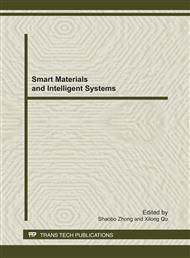[1]
Francis W, Kucera H. Brown corpus manual. Brown University, (1979).
Google Scholar
[2]
Liu Kaiying. Automatic segmentation and labeling of Chinese text. Commercial Press. (2000).
Google Scholar
[3]
Gildea D, Jurafsky D. Automatic labeling of semantic roles. Computational Linguistics, 2002, Vol. 28 (3): 245-288.
DOI: 10.1162/089120102760275983
Google Scholar
[4]
Liu Ting, Chen Wanxiang, Li Sheng. Semantic role labeling based on maximum entropy classifier. Journal of Software, 2007, Vol. 3: 45-53.
Google Scholar
[5]
Dong Shihai, Wang Jian, Dai Guozhong. Human-computer interaction and multi-channel UI. Science Press, Beijing. (1999).
Google Scholar
[6]
Wang Yunpeng. CAD develop platform that support collaborative design, PhD thesis. Beijing University of Aeronautics & Astronautics, (2003).
Google Scholar
[7]
Mann W, Thompson S. Rhetorical structure theory: Toward a functional theory of text organization. Text, 1988, Vol. 8(3): 243-281.
DOI: 10.1515/text.1.1988.8.3.243
Google Scholar
[8]
Wu Zhenglong, Fan Lun, Teng Minggui. An intelligent knowledge acquisition interface design and implementation. University of Science and Technology. 2003. Vol. 33(2): 227-231.
Google Scholar
[9]
Houston P J. Component-based development. CORBA and RM-ODP. IEEE Proc-Software, 1998, 145 (1): 22-28.
DOI: 10.1049/ip-sen:19983505
Google Scholar
[10]
Zhou Jianwu, Dai Guozhong. User Interface Evaluation System UIEV-Pro Design and Implementation . CAD & CG Journal. (1998).
Google Scholar
[11]
Chuck White, Liam Quin, Linda Burman. XML From Novice to Professional. Electronic Industry Press. (2002).
Google Scholar
[12]
Pustejovsky J, Castano J, Ingria R et al. TimeML: Robust specification of event and temporal expressions in text. (2003).
Google Scholar
[13]
Karli Watso. C# 2005 Database Programming Tutorial. People Posts & Telecom Press. (2007).
Google Scholar
[14]
Zhang Li. C# 2. 0 Collection. Electronic Industry Press. (2007).
Google Scholar
[15]
Tian Bian, Liu Cheng. PDUIMS-UI Management System Design and Application based on persistent storage . Computer Journal, 2000, Vol. 23 (6): 660-666.
Google Scholar
[16]
Zhu Jun, Hua Qingyi, Hao Kegang. Graphic UI architecture and instance based on CORBA. Computer Journal, 1999, Vol. 22(1): 79-85.
Google Scholar
[17]
Allan J. Topic detection and tracking: event-based information organization: Kluwer Academic Publishers; (2002).
Google Scholar
[18]
Ding Youhe. MFC customized methods for personalized interface. Computer Application. 2002. Vol. 3: 154-157.
Google Scholar
[19]
Huo Faren. Human Machine Interface Design & Research. Master thesis. Wuhan Institute of Technology. (2003).
Google Scholar
[20]
Yin Zhihong. Human-Machine interface model research and implementation. Shanghai Jiao Tong University Journal. 2003. Vol. 5: 78-82.
Google Scholar
[21]
Ning Zhigang, Huang Kaisheng, Fu Xiufeng. XML based adaptive strategy of intelligent interface. Microelectronics & Computer. 2003. Vol. 3: 51-53.
Google Scholar


